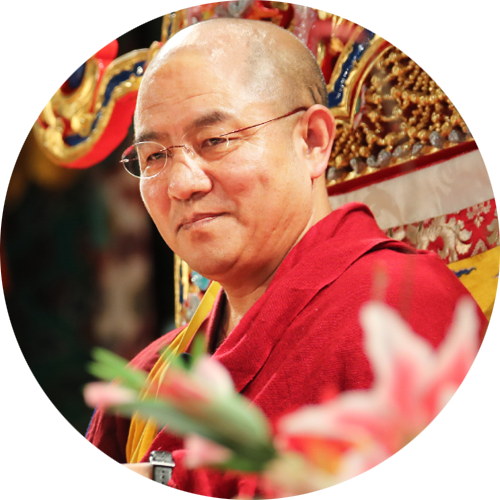10. Reflecting on Why Generate a Sense of Joy
Longchen Nyingtik Meditation 10
The Beginning
Take refuge and arouse bodhichitta.
The Main Part
Think over and over again on your good fortune that you have obtained a precious human body. You are as ecstatic as a destitute person who chances upon a wish-fulfilling jewel, or a beggar who wins the super lottery and can’t sleep a wink at night. Reflect: Among the many human beings in the world, very few are practicing the Dharma. While for myself, I have been granted a human body complete with freedoms and advantages, and I can train with any suitable Dharma technique at will. Review your well-favored situation and ask: Is this a dream or for real? Thereby generate tremendous joy from the depth of your heart.
The Ending
Dedicate all the merit of your practice to all sentient beings.
Reminder
Often I think: There are so many people in the world who have not encountered the Dharma. For me, however, not only have I met the Dharma but also have I been cared for by a great master who caused me to gain some understanding of the Dharma. I am so utterly happy! I am sure you also share this sentiment and can’t help feeling great joy for your good fortune, and with that, you’ll progress on your path with sustained energy and strength.
In sitting, we follow the instruction of Longchenpa to assume the posture of resting the mind in comfort and ease, that is, to put two palms on top of the two knees as shown in this picture of Longchenpa. Alternatively, sitting with the two hands in the equipoise mudra as described in the Seven Point Posture of Vairocana is also fine.
There are ten instructions under the topic of “The difficulty of finding the freedoms and advantages”; today’s teaching being the last one. How is your meditation on this topic so far? You may as well make an honest assessment of yourself. If it’s less than satisfactory, you should refer to the instructions in A Treatise on Finding Comfort and Ease in the Nature of Mind in the Great Perfection, The Words of My Perfect Teacher, and Khenpo Ngakchung’s A Guide to the Words of My Perfect Teacher. All these three books have excellent sections explaining the meditation on a precious human birth.
Our in-class sitting allows only a rough sketch of the formal meditation that you must follow up on your own. Some of you may have done a good job and genuinely recognize the full worth of a human existence, feeling jubilant for having the chance to practice the Dharma at all. Others may just put on a show without true reflection. Whatever the situation, I have finished this part and, if no obstacles are surfacing, I’ll go on and complete Longchenpa’s instructions on the Sutrayana portion.
